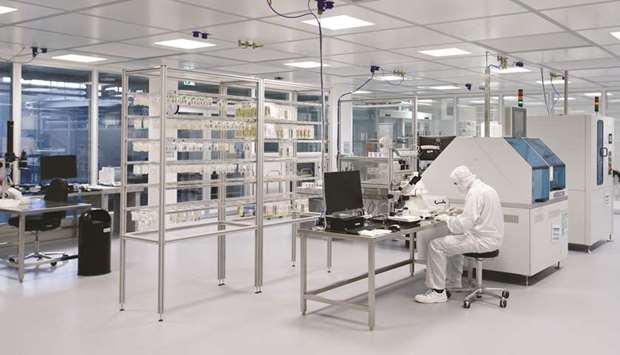Osram Licht AG granted AMS AG permission to submit a $4.2bn takeover offer, ramping up pressure on Bain Capital and Carlyle Group to raise their joint bid for the German lighting maker.
Shares of Osram rose yesterday after it waived a standstill provision and agreed to cooperate with AMS. The move allows the Austrian suitor’s tender offer to run at the same time as a competing bid from the two US buyout funds.
The fate of the former Siemens AG lighting unit now rests in the hands of shareholders, who must decide between the two offers. Osram’s biggest shareholder, Allianz, had previously called the $3.8bn offer from Bain and Carlyle “too low,” while Osram unions have expressed concerns about AMS. The private equity firms are considering whether to increase their bid, people familiar with the matter said earlier this week.
“Our shareholders now have two offers on the table, allowing them to choose between the different business concepts,” Osram chief executive officer Olaf Berlien said in a statement late on Wednesday. German financial regulators must now sign off on Osram’s decision.
Osram advanced 1.9% to €36.95 as of 1:118pm in Frankfurt, while AMS was down 2.1% in Zurich. Bloomberg reported Wednesday that Osram had agreed to allow the €38.50-a-share bid from AMS to move forward. The private-equity offer stands at €35 a share.
AMS, like Bain and Carlyle, will need to get at least 70% of Osram’s investors to tender their shares in order for its offer to be successful. Shareholders will probably have until the beginning of October to decide, depending on how fast the agreement wins approval from regulators.
The announcement caps a tumultuous journey in which AMS submitted, withdrew and then asked to resubmit a bid even though takeover regulations prevented it from coming back for a year. Osram said Wednesday it had waived that rule to let AMS back in.
AMS’s bid has come up against opposition from unions and workers’ representatives, who criticise the on-again, off-again nature of the dealings. On top of that are broad concerns about AMS’s debt levels and the fact that shareholders of the Austrian semiconductor group also need to approve a capital raise to finance the transaction, which was signalled in the decision to sign a cooperation agreement instead of a more commonly-used business combination agreement.
Osram is also concerned over the cost savings a combination would achieve, CFO Ingo Bank said in a Bloomberg TV interview yesterday.
“We had some insight into synergies, but limited,” Bank said. “Overall, from a cost synergy perspective, I think what they’ve put together is reasonable. The only question is timing.”
Osram became a takeover target after a series of profit warnings and a public spat over strategy with its former shareholder, Siemens, which spun the division off in 2013. Earnings have suffered because of the company’s exposure to the automotive industry, which accounts for over half of revenue.
Carmakers and suppliers are grappling with shrinking demand in China and Europe and the expensive transition to electric cars. Investors also lost confidence in the ability of Berlien and other managers to turn the company around.
If successful, AMS plans to sell off Osram’s digital division, which makes lighting controls for use in horticultural and medical systems, among others. Its offer also committed to supporting existing union agreements for five years.

An employee carries out quality checks on light-emitting diode (LED) ceramic platelets inside the clean room at the Osram Licht lighting component manufacturing facility in Augsburg, Germany.
